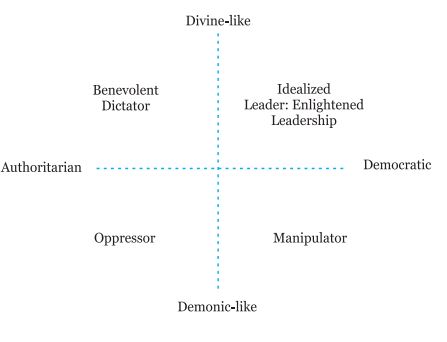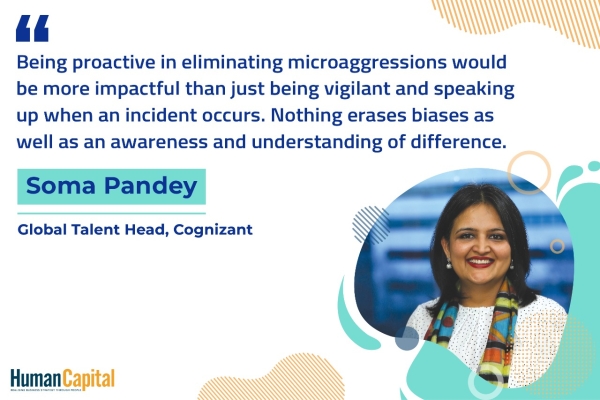It is imperative for organisations to consider the issue of burnout very seriously, and more so when the current scenario is laden with layoffs, job insecurity, work from home, and high dependence on technology.
Burnout’ was first coined in the 1970s by Herbert Freudenberger. And this concept was further developed by Christina Maslach, a Social Psychologist, who subsequently developed the most widely used questionnaire for assessing burnout. Until the mid1990s, when a general version was published, burnout was more or less a phenomenon restricted to the humanities or caring professions. Researchers like Leone et al. argued that burnout is the heir to Neurasthenia, an illness first described in 1869 by Neurologist George Miller Beard. Neurasthenia centred on the notion of a somatic depletion of nervous energy caused by excessive demands on peoples’ brains, owing to the fast-paced modern life, causing symptoms such as exhaustion, anxiety, despair, insomnia, palpations, and migraines. The striking similarity between burnout and neurasthenia is that both are considered maladies of their times, and mental exhaustion is a common defining symptom in both the conditions. So, the concept of burnout is archaic but not obsolete.
Burnout: A medical condition
In May 2019, WHO included burnout in its International Classification of Diseases (ICD11) defining burnout as, “resulting from chronic workplace stress that has not been successfully managed.” This update served the purpose of not only raising awareness but strengthening its strong connection to workplace factors causing burnout. Many assumed that burnout would now be considered a medical condition. WHO then clarified that it has been included as an occupational phenomenon and not a medical condition. Often people experiencing burnout ignore its severity, perceiving it to be temporary work stress. However, it is important to note that there is a major distinction between stress and burnout. Stress is characterised by over engagement, while burnout is characterised by disengagement. Stressed people can still see the proverbial silver lining in the cloud, but burnout is associated with a feeling of helplessness and hopelessness.
Burnout can be caused by multiple factors and could be related either to the individual, interpersonal stressors or workplace environment. Whatever the cause, it is important that burnout is not discounted as a problem specific to certain employee/s. While it is critical to understand whether everything is fine with the employees, it is equally important to ascertain if things are fine with the company. In 2018, Gallup conducted a survey of 7,500 employees and found the top five reasons for burnout as - unfair treatment at work, unmanageable workload, lack of role clarity, lack of support from the manager and unreasonable time pressure. In another survey on 9013 participants, Teamblind Inc identified poor leadership as the number one cause of burnout in Tech workers. Various researches in recent years, including those conducted by Harvard, University of Manchester etc. indicate that poor leaders/toxic bosses are often the culprit for employee burnout.
In June 2018, a survey was conducted by The Predictive Index on 5,103 respondents from 22 different industries asking them to rate their manager on a scale of 1- 10, with 1 for terrible and 10 for awesome. Those who got a rating of 4 or below falling in the category of ‘bad managers’, had several aspects in common. These managers failed to communicate clear expectations, played favourites, displayed a lack of concern for the career development of subordinates, were not open to feedback, wanted to prove themselves right, betrayed trust, were poor listeners, and put their own needs first. These managers, though focused on themselves, lacked self-awareness as well as knowledge about how their behaviour impacted those around them.
Types of Managers
An analysis of different types of managers in light of the Human Quality Grid by Dr Subhash Sharma presents us with four types of managers or leaders.
♦ Democratic & Divine-like
♦ Authoritarian & Divine-like
♦ Democratic & Demonic-like
♦ Authoritarian & Demonic-like
Management Styles and Leadership Grid
The First strand of thought views humans in terms of the authoritarian-democratic modes of management style. The Second strand of thought is derived from the lessons about human nature from Gita. The Divine-like human qualities include truthfulness, gentleness, modesty, steadiness, forgiveness, freedom from anger, malice, and excessive pride (Gita, XVI, 2&3). The Demonic-like display arrogance, excessive pride, anger and manipulation (Gita, XVI, 4,10). A combination of Democratic and Divine-like can be considered as an ‘idealised’ type of manager. The Authoritarian and Divine-like is the typical benevolent-dictator. Democratic and Demonic-like is the typical manipulator type of manager. This type uses the democratic process as a facade to cover up his/her manipulative tactics. Authoritarian and Demonic-like is an oppressor as depicted through many mythological characters.
The ‘bad managers’ in the study by the predictive index quoted above seem to be more of the democratic-demonic types. In the same study, respondents were given an open field question to share the top words that came to their mind when thinking of great managers. Strong work ethics, respectful, supportive, communicative, honest, transparent, fair were the keywords used by them to define great managers correlating with the idea of divine democratic managerial style. If the managerial style is more of authoritarian-demonic type, there is likely to be high levels of negative energy taking a toll on employee’s emotional and the organisation’s financial health.
The need for due credence
In a research by Tait et al to study the impact of organisational leadership and physician burnout, published in Mayo Clinic proceedings, the respondents were asked to rate the extent to which they agreed with a set of given statements about their supervisor. The statements were along the lines - my supervisor holds career development conversations with me, inspires me to do my best, treats me with respect, recognises me for a job well done, empowers me to do my job, is interested in my opinion, keeps me informed about changes and encourages me to develop my talents.
It was found that for every 1-point increase in the composite leadership score, there was a commensurate 3.3% decrease in the likelihood of burnout. While this research reestablishes the close linkage between managerial style and burnout, it also suggests that the key for positive workplace lies in the Divine managerial style (autocratic or democratic), depending on the situational contingencies. Implementing such kind of surveys where managers can get feedback and take coaching for making improvements in their management practices can be worthwhile for reducing burnout caused by a bad manager or boss.
Work forms an integral part of a person’s life, and it is imperative for organisations to consider the issue of burnout very seriously, and more so when the current scenario is laden with layoffs, job insecurity, work from home, and high dependence on technology. The present dynamic and uncertain work climate calls for drawing upon the Divine democratic managerial style for creating a synergistic work environment. It is noteworthy that workplace burnout can be cumulative, and in the event of a manager experiencing burnout, it may affect those working with him owing to the snowball effect. Hence, organisations will have to keep a close eye on every workplace factor that could cause burnout, be it a bad boss, work policies, or factors rooted in the organisation culture.
Follow and connect with us on LinkedIn, Facebook, Instagram, Twitter for latest HR news and insights.
Has COVID-19 forever changed the way we live and work?
Trending
-
SBI General Insurance Launches Digital Health Campaign
-
CredR Rolls Out 'Life Happens' Leave For Its Employees
-
Meesho Announces 30-Week Gender-Neutral Parental Leave Policy
-
Microsoft Unveils Tech Resilience Curriculum To Foster An Inclusive Future
-
60% Indian Professionals Looking For Job Change Due To COVID: Survey
-
SpringPeople And Siemens Collaborate For Digital Transformation Push
-
86% Professionals Believe Hybrid Work Is Essential For Work Life Balance: Report
-
Almost 1 In Every 3 People's Personal Life Affected Due To Work Stress
-
Meesho Rolls Out Reset And Recharge Policy For Employees
-
80% Of Talent Leaders & Academics Say Pandemic Changed Skill Needs For Youth: Report
-
Hero Electric Rolls Out 'Hero Care' Program For Employees
-
Human Capital In Collaboration With ASSOCHAM Hosts Virtual Conference
-
IKEA India, Tata STRIVE Collaborate To Create Employability And Entrepreneurship Opportunities
-
SAP India, Microsoft Launch Tech Skilling Program for Young Women
-
DXC Technology, NASSCOM Collaborate For Employability Skills Program
-
Lenskart To Hire Over 2000 Employees Across India By 2022
-
Mindtree Launches Learn-and-Earn Program
-
Tata AIA Extends 'Raksha Ka Teeka' To Its Employees
-
Swadesh Behera Is The New CPO Of Titan
-
NetConnect Global Plans To Recruit 5000 Tech Professionals In India
-
Hubhopper Plans To Hire 60% Of Indian Podcasters By 2022
-
Corporate India Needs More Women In Leadership Roles: Report
-
Aon to Invest $30 Million and Create 10,000 Apprenticeships by 2030
-
Tech Mahindra Launches ‘Gift a Career’ Initiative for Upskilling of Youth
-
40% Women Prefer Flexible Working Options in Post-COVID World: Survey
-
3 out of 4 companies believe they can effectively hire employees virtually: Report
-
Vodafone , CGI and NASSCOM Foundation launch digital skills platform
-
Odisha: Bank, postal employees to deliver cash for elderly, differently-abled persons
-
Skill India launches AI-based digital platform for "Skilled Workforce"
-
Hiring activity declines 6.73% in first quarter: Survey
-
70% startups impacted by COVID-19 pandemic
-
Bajaj Allianz Life ropes in Santanu Banerjee as CHRO
-
Over 70 Percent MSMEs look at cutting jobs to sustain businesses
-
93 Per Cent employees stressed about returning to office post-lockdown
-
Johnson & Johnson India announces family benefits for same gender partners
-
Indian firms turning friendly towards working mothers
-
Welspun India names Rajendra Mehta as new CHRO
-
Wipro partners with NASSCOM to launch Future Skills platform



Human Capital is niche media organisation for HR and Corporate. Our aim is to create an outstanding user experience for all our clients, readers, employers and employees through inspiring, industry-leading content pieces in the form of case studies, analysis, expert reports, authored articles and blogs. We cover topics such as talent acquisition, learning and development, diversity and inclusion, leadership, compensation, recruitment and many more.
Subscribe Now



.PNG)









































Comment